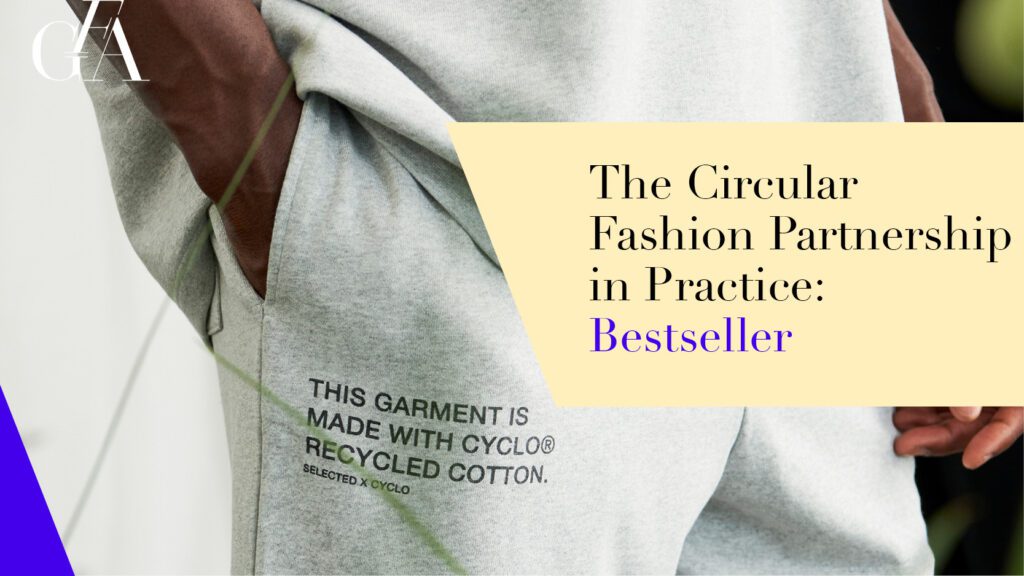The Circular Fashion Partnership (CFP)
CFP is a cross-sectional partnership to achieve a long-term, scalable transition to a circular fashion system. Bestseller is part of the initiative.

The Circular Fashion Partnership (CFP)
CFP is a cross-sectional partnership to achieve a long-term, scalable transition to a circular fashion system. Bestseller is part of the initiative.

For Camilla Skjønning Jørgensen, Sustainable Materials & Innovation Manager at BESTSELLER, it’s all about being holistic.
“Walk the talk” is this plant-based woman’s approach to life, and since she loves the fashion industry, she wants to make sure it’s as sustainable as can be. Having been with BESTSELLER for 16 years, starting out within Buying and Design, Camilla became more and more sustainability conscious in her approach and solutions. Her actions led to the start of sustainable collections for various BESTSELLER brands, and since 2018 she has led the company’s overall sustainability innovation strategy, Fashion FWD Lab; aiming to drive sustainability to the next level both within BESTSELLER and within the fashion industry.
Therefore, Camilla and her team didn’t hesitate to participate in the Circular Fashion Partnership focusing on recycling in Bangladesh because if you want to make a change, you need to walk the talk. We asked her four quick questions:
“Experiencing first hand, as a buyer and designer in BESTSELLER, that the choices and actions I made had a large scale impact, is what prompted me to keep pushing for changes and new ways of working more sustainable.
“I loved the fashion industry but was also aware of the challenges it faced in regards to sustainability. At the time I was responsible for a sub collection in VERO MODA and by slowly shifting what I could into more sustainable material choices, I gained more and more knowledge about what I could do. In the end, my actions led to the start of VERO MODA’s first more sustainable collection. This led to another opportunity working with SELECTED to convert their material use into more sustainable materials. Now I operate at corporate level where we set the strategy for our shift towards more sustainable materials for all BESTSELLER brands and work tirelessly with innovation to enable BESTSELLER to be circular by design in a near future.”
“Since 2018 we have had our sustainability strategy, Fashion FWD, which works as a driver for our work in BESTSELLER. In my team, which focus on innovation and materials, we work with innovative pilots where we connect stakeholders, brands, suppliers and innovators. With that we spark a structural change that can drive sustainability to the next level – both within BESTSELLER and within the industry.”
“We need innovation to reach commercial stages with prices, volumes and qualities and we need a systemic change where the innovation gets implemented into supply chain structures and into brands. This can only happen when combining fashion industry level, policy level and country and local government level. No company alone can solve this and make the systemic change.
“We also need quality input designed for circularity, waste stream structures, innovations that can use waste as feedstock for new materials, and brands which will implement it in their designs – and of course customers willing to buy the products.”
“Fashion is “market reactive” – if brands send a strong signal to suppliers about wanting more recycled materials, and if we on top of that support the work that needs to be done to make this a reality – then I actually don’t see why it would not happen or not make an impact. It is possible as the waste is already where the industry is: in Bangladesh. We have recyclers; we have the suppliers and the brands looking for this material. All we need is to connect the dots and do the work. Of course, it is not as easy as it sounds. But it is possible and thus achievable.”